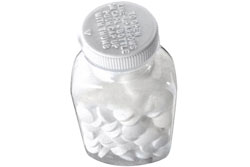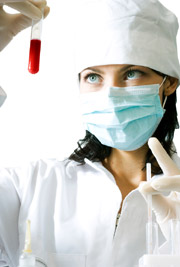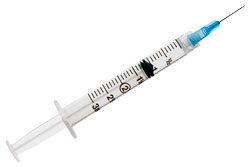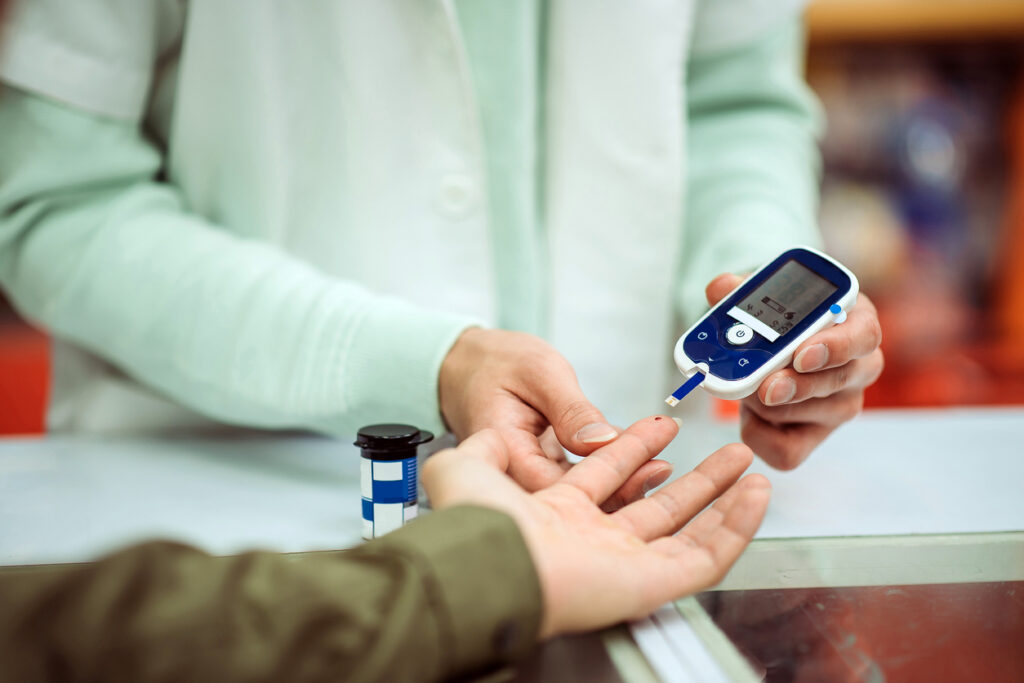Introduction to testosterone replacement therapy
- Who uses testosterone replacement therapy?
- Who cannot use testosterone replacement therapy?
- Precautions
- Treatment goals and outcomes
- Dosage
How is testosterone administered?
- Monitoring treatment
- Concomitant therapy
- Benefits of testosterone replacement therapy
- Side effects and risks associated with testosterone replacement therapy
Introduction to testosterone replacement therapy
Testosterone replacement therapy is a treatment in which additional testosterone is added to a man’s body (e.g. by injecting medicines that contain testosterone), to increase the concentration of testosterone in his body. It is used to treat hypogonadism, a condition characterised by low levels of testosterone in the blood and clinical symptoms of testosterone deficiency (e.g. lack of body hair, excessive breast growth). Hypogonadism occurs when a man’s testes do not produce enough testosterone, either because the testes are not working properly, or because the hypothalamus or pituitary gland in the brain are not working properly. The hypothalamus and pituitary glands produce hormones that stimulate testosterone production in the testes.
The aim of testosterone replacement therapy is to increase blood testosterone concentrations to normal levels. In doing so, it can also restore the man’s sex drive and expression of male sex characteristics (e.g. deep voice, body hair).
Testosterone is one of the oldest marketed drugs and has been used in testosterone replacement therapy since the 1930s.
Who uses testosterone replacement therapy?
Testosterone replacement therapy is used to treat men who have received a definitive diagnosis of hypogonadism. In order to be diagnosed with hypogonadism, a man must have both low blood concentrations of testosterone and clinical symptoms of deficiency (e.g. lack of body hair, breast growth). As most of the causes that underlie testosterone deficiency (e.g. testicular dysfunction) are untreatable, most men who commence testosterone replacement therapy must be treated for the rest of their lives. In men with reversible or age-related causes of testosterone deficiency, testosterone replacement therapy is not used.
 |
For more information, see Male Hypogonadism. |
Who cannot use testosterone replacement therapy?
Ageing men (> 40 years of age)
As men age, their testosterone levels naturally decrease in a process sometimes called andropause or male menopause. This can lead to clinical symptoms of testosterone deficiency and/or low blood testosterone levels. There is no evidence that testosterone replacement therapy is beneficial for these men.
For older men, treatments that address the conditions causing or worsening testosterone deficiency (e.g. obesity, diabetes, chronic illness) may be effective.
Chronic or transient illness or recent trauma
Testosterone replacement therapy is rarely beneficial where hypogonadism is caused by illness (e.g. diabetes) or trauma (e.g. injury to the testicles). In these cases, the illness or trauma causing testosterone deficiency should be treated.
Testosterone replacement therapy is not used to treat men with breast or prostate cancer, because there is a hypothetical risk that treatment may stimulate the growth of these cancers.

Testosterone replacement therapy is not used to treat men with the following conditions:
- Prostate nodules or indurations;
- Increased levels of prostate-specific antigen (PSA) for which there is no explanation;
- Erythrocytosis;
- Benign prostatic hyperplasia with severe urinary tract problems;
- Congestive heart failure;
- Untreated sleep apnoea;
- Aged > 65 years;
Testosterone replacement therapy is not used to treat infertility, erectile dysfunction or non-specific symptoms.
Precautions
Certain conditions require special consideration before testosterone replacement therapy is used. Tell your doctor if you have:
- Age > 40 years;
- Not yet reached puberty;
- Epilepsy;
- Migraines;
- Sleep apnoea;
- Polycythaemia;
- Heart failure;
- Kidney failure; or
- Severe hypertension.
Treatment goals and outcomes

- Increased libido;
- Improved sense of well-being;
- Reduced body fat and increased lean body mass; and
- Increased bone density.
Improvements in blood testosterone levels and libido generally occur within the first week of treatment, and other benefits usually occur within two months.
It is important to note that testosterone replacement therapy typically induces a strong placebo effect in the initial stages of therapy. This means that many men who are treated with testosterone notice an improvement (e.g. better sex drive), not because of the testosterone-containing medication has improved their testosterone concentrations, but because of the psychological effect of taking it. In short, some men think testosterone therapy is working and then feel better, even though the treatment does not work. This may lead to confusion and dissatisfaction as the placebo effect of treatment diminishes.
Dosage
Most adult men begin receiving replacement testosterone at a dose sufficient for restoring blood testosterone to normal levels in men aged < 40 years. In boys who have not yet reached puberty and elderly men, lower doses are usually used at the beginning to avoid excessive increases in libido or energy, which may be dangerous. Once treatment has started, the doctor will monitor the man’s blood testosterone levels and symptoms, and may need to adjust the dose depending on how these change.
How is testosterone administered?
Testosterone can be administered in various ways, depending on the person. Most men will first receive treatment in the form of testosterone injections every two weeks. Men who cannot receive injections (e.g. those with bleeding disorders) will receive different modes of testosterone treatment. The doctor may also change the type of testosterone administered if the man is dissatisfied with the current treatment. A doctor will try to prescribe a type of testosterone therapy that suits the patient in terms of cost, response and convenience, and individuals should talk to their doctor if they have concerns about any aspects of treatment.
Injectable testosterone is the standard and most cost-effective treatment option. It can be used in all men except those with bleeding disorders. The injection is an oil-based solution containing testosterone. It is administered by intramuscular injection. Once injected, the solution gradually releases testosterone into the bloodstream.
The standard starting dose is one injection containing 200–250 mg of testosterone every 2–3 weeks. The dose may be reduced to as little as 100 mg in very young or old men. The quantity and frequency of the dose will be adjusted by the doctor, according to the response to treatment. Men who do not achieve adequate increases in blood testosterone may have the dose increased, while those who gain too much blood testosterone may have the dose reduced.
Testosterone injections which are administered every two weeks are known as short-acting injectable testosterones (e.g. Sustanon). While they are effective in increasing blood testosterone levels and often improve symptoms (e.g. libido, mood, energy), testosterone levels and symptoms tend to fluctuate between injections. Men using these injections may experience very high peaks in testosterone levels and a resulting increase in libido and energy in the period immediately following the injection, followed by a period of much lower blood testosterone. Long-acting injections of testosterone (e.g. Reandron), which are administered every 3 months, provide an alternative for men who experience the peak–trough effect.
Long-acting testosterone injections provide testosterone replacement for 10–14 weeks. They are administered by injection deep into the gluteal muscle. The testosterone is released gradually into the bloodstream.
For more information on long-acting testosterone injections, see testosterone undecanoate (Reandron).
Transdermal testosterone patches
Testosterone patches that adhere to the skin may also be suitable for long-term testosterone replacement therapy. However, the patches contain substances that increase the absorption of testosterone, and these cause skin irritation in up to 50% of men who use them. Some 10% of men stop using testosterone patches because of skin irritation. Men may also discontinue use because they find the patches cosmetically displeasing. They may find other transdermal methods of administration more appropriate (e.g. gels, creams).
Most men require a single patch containing 5 mg of testosterone daily. The patch can be applied to the abdomen, upper arm or thigh, and should be left in place for 24 hours after application, when a new patch should be applied.
For more information on testosterone patchess, see testosterone (Androderm).

The starting dose varies and may be as low as 40 mg daily, although men typically require 160–240 mg a day, taken in 2–4 doses. The doctor will adjust the dose, depending on the response to treatment. Oral testosterone should be taken with food, as this increases the amount of testosterone absorbed by the body.
Testsosterone implants contain 800 mg of testosterone (usually in the form of four 200 mg pellets). They are implanted into the buttocks or abdomen, and provide testosterone replacement for around six months. Implants are replaced periodically, once symptoms of testosterone deficiency recur. Inserting the testosterone pellets is a minor surgical procedure, requiring local anaesthetic; this is the major limitation of this method of treatment. However, men using this form of testosterone replacement are usually satisfied with the method, and are more likely to continue being treated than men using other modes of testosterone replacement.
Testosterone implants are not safe for use by older men, who have an increased risk of prostate cancer. If prostate cancer is diagnosed, testosterone replacement must be stopped immediately, which cannot be done if an implant is being used. Implants are also unsuitable for young men with bleeding disorders. Another form of testosterone replacement must be used first, so that a doctor can be sure they will not have any negative reaction to testosterone, before starting this long-term mode of treatment.
For more information on testosterone implants, see testosterone (Testosterone Implants).
Testosterone gels (e.g. Testogel) contain 1% testosterone that is absorbed through the skin. The gel is applied to the skin on the abdomen, shoulder or arm on a daily basis. The standard dose is 5 g (50 mg testosterone), although the dose may be increased to as much as 10 g daily in some men, while others will respond adequately to 2.5 g daily.
Care must be taken to ensure the gel does not come into contact with the skin of individuals other than the man being treated (e.g. sexual partners, children) for at least six hours following application, as this may cause testosterone to be transferred to the contact’s skin and absorbed by their body. Absorbing testosterone may be dangerous for children and women, especially pregnant women.
For more information on testosterone gel, see testosterone (Testogel).
Andromen forte (testosterone) is a cream containing 5% testosterone. It is ideally applied to the skin of the scrotum on a daily basis. The cream can be applied to the skin of the torso, back, chest, arms and legs, although a higher dose might be required if these sites are used, as less testosterone is absorbed compared to if the cream is applied to the scrotum. The usual starting dose is 1 g of cream (5 mg testosterone), but a doctor may adjust the dose depending on how the man responds to the treatment.
Monitoring treatment

To assess the man’s response to treatment, levels of testosterone in his blood are usually measured three months after the start of treatment. Levels of luteinising hormone (LH) may also be measured three to six months after treatment starts, as low levels of LH indicate that the treatment is effective.
If blood tests show that testosterone replacement therapy has failed to adequately increase concentrations of testosterone in the man’s blood, hypogonadism may not be the cause of the symptoms. In these cases, testosterone replacement therapy will be stopped and the doctor will start treating other conditions that may contribute to testosterone deficiency.
A doctor will monitor changes to symptoms of testosterone deficiency and side effects of the treatment. This monitoring usually occurs three and six months after treatment commences and annually thereafter. A doctor will typically examine a man for signs of:
- Oedema;
- Breast growth;
- Sleep apnoea;
- Lower urinary tract disorders; and
- Low bone mineral density.
Tests that will usually be conducted periodically include:
- Digital rectal examination for prostate disease;
- Blood testosterone levels;
- Blood prostate specific antigen levels;
- Haematocrit;
- Bone mineral density;
- Blood lipid levels;
- Liver function.
Concomitant therapy
Testosterone replacement therapy may sometimes be combined with treatment using PDE-5 inhibitors, a medication used to treat erectile dysfunction, for men with both hypogonadism and erectile dysfunction. It should be noted, however, that testosterone deficiency is rarely associated with erectile dysfunction.
Benefits of testosterone replacement therapy

Physical
- Increased energy;
- Increased bone density;
- Reduced risk of obesity, diabetes and metabolic syndrome;
- Reduced risk of cardiovascular disease;
- Reduced risk of osteoporosis;
- Reduced body fat;
- Reduced risk of anaemia; and
- Increased lean body mass and muscle strength.
Sexual
- Increased libido;
- Increased sexual enjoyment;
- Increased satisfaction with erections; and
- Increased sexual activity.
Psychological
- Improved mood and sense of wellbeing; and
- Improved cognition and memory function.
Side effects and risks associated with testosterone replacement therapy
The side effects associated with testosterone replacement therapy are rare and vary depending on the age of the man being treated, his life circumstances and health condition. They include:
- Polycythaemia: Usually occurs in older men receiving injectable forms of testosterone;
- Sleep apnoea;
- Mania: Experienced by a small proportion of men when too much testosterone is administered;
- Reduced testicle size, and infertility: Due to the effect of testosterone on gonadotrophins;
- Breast growth;
- Erythrocytosis;
- Skin diseases: Occurs mainly with use of transdermal patches;
- Acne, hair growth and weight gain.
Testosterone replacement therapy increases the risk of some health conditions, including:
- Liver diseases: Most commonly associated with oral testosterone therapy; and
- Prostate disease: Men with testosterone deficiency have a lower risk of prostate disease than men who produce sufficient testosterone, as the growth of prostate cancer is sensitive to testosterone levels. For this reason, prostate disease must be ruled out in men over 40 before testosterone replacement therapy commences, although there is no conclusive evidence demonstrating an increased risk of prostate cancer amongst men undergoing testosterone replacement therapy.
More information
 |
For more information on testerone deficiency in men, see Testosterone Deficiency. |
References
- Handelsman DJ, Zajac JD. Androgen deficiency and replacement therapy in men. Med J Aust. 2004. 180(10): 529-35.
- Handelsman DJ. Testosterone: Use, misuse and abuse. Med J Aust. 2006; 185(8): 436-9.
- Darby E, Anawalt BD. Male hypogonadism: An update on diagnosis and treatment. Treat Endocrinol. 2005; 4(5): 293-309.
- Conway AJ, Handelsman DJ, Lording DW, Stuckey B, Zajac JD. Use, misuse and abuse of androgens: The Endocrinology Society of Australia consensus guidelines for androgen prescribing. Med J Aust. 2000; 172(5): 220-4.
- Bassil N, Alkaade S, Morley JE. The risks and benefits of testosterone replacement therapy: A review. Ther Clin Risk Manag. 2009; 5(3): 427-48.
- Consumer medical information: Sustanon. North Ryde, NSW: Schering-Plough Pty Ltd; February 2009.
- Allan CA, Strauss BJ, Burger HG, Forbes EA, McLachlan RI. The association between obesity and the diagnosis of androgen deficiency in symptomatic ageing men. Med J Aust. 2006: 185(8): 424-7.
- Product information: Reandron. Pymble, NSW: Bayer Australia Limited; 21 July 2008.
- Consumer medical information: Androderm. Melbourne, VIC: Hospira Australia Pty Ltd; April 2009.
- Product information: Andriol Testocaps. North Ryde, NSW: Schering Plough Pty Ltd; 8 December 2008.
- Product information: Testosterone Implants. North Ryde, NSW: Schering Plough Pty Ltd; 16 December 2008.
- Product information: Testogel. Pymble, NSW: Bayer Australia Limited; 18 May 2007.
- Product information: AndroMen Forte. Mt Lawley, WA: Lawley Pharmeceuticals; November 2007.
- Wang C, Cunningham, G, Dobs A, Iranmanesh A, Matsumoto AM, Snyder PJ, et al. Long term testosterone gel (Androgel) treatment maintains beneficial effects on sexual function and mood, lean and fat body mass and bone mineral density in hypogonadal men. J Clin Endocrinol Metab. 2004; 89(5); 2085-98.
Drugs used in this treatment:
- Testogel (Testosterone)
- Reandron (Testosterone undecanoate)
- Andriol (Testosterone undecanoate)
- Androderm (Testosterone)
- Testosterone Implants (Testosterone)
This treatment is used for the following diseases:
All content and media on the HealthEngine Blog is created and published online for informational purposes only. It is not intended to be a substitute for professional medical advice and should not be relied on as health or personal advice. Always seek the guidance of your doctor or other qualified health professional with any questions you may have regarding your health or a medical condition. Never disregard the advice of a medical professional, or delay in seeking it because of something you have read on this Website. If you think you may have a medical emergency, call your doctor, go to the nearest hospital emergency department, or call the emergency services immediately.









